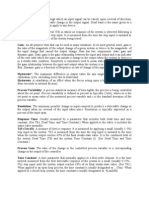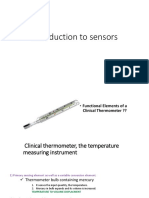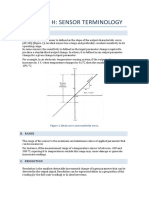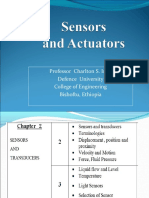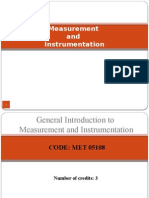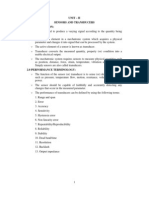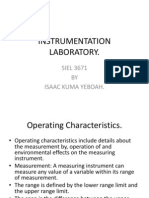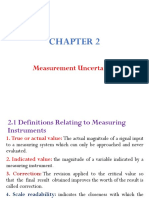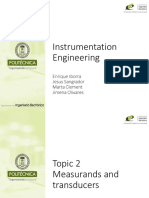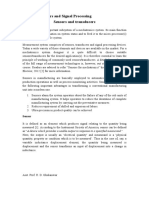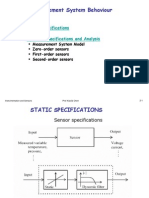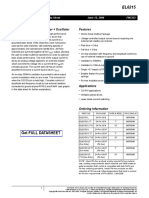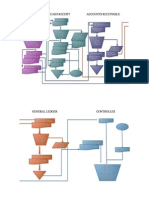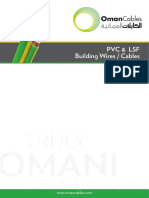Terminology
1. Range
The range of a sensor indicates the limits between
which the input can vary. For example, a thermocouple for
the measurement of temperature might have a range of
25-225 °C.
2. Span
The span is difference between the maximum and
minimum values of the input. Thus, the above-mentioned
thermocouple will have a span of 200 °C.
� Terminology
3. Error
Error is the difference between the result of the
measurement and the true value of the quantity being
measured. A sensor might give a displacement reading of
29.8 mm, when the actual displacement had been 30 mm,
then the error is –0.2 mm.
4. Accuracy
The accuracy defines the closeness of the agreement
between the actual measurement result and a true value of
the measurand. It is often expressed as a percentage of the
full range output or full–scale deflection.
� Terminology
5. Sensitivity
Sensitivity of a sensor is defined as the ratio of change
in output value of a sensor to the per unit change in input
value that causes the output change. For example, a general
purpose thermocouple may have a sensitivity of 41 µV/°C.
� Terminology
6. Nonlinearity
The nonlinearity indicates the maximum deviation of the
actual measured curve of a sensor from the ideal curve. Figure
shows a somewhat exaggerated relationship between the ideal,
or least squares fit, line and the actual measured or calibration
line.
� Terminology
7. Hysteresis
The hysteresis is an error of a sensor, which is defined as the
maximum difference in output at any measurement value within
the sensor’s specified range when approaching the point first
with increasing and then with decreasing the input parameter.
� Terminology
8. Resolution
Resolution is the smallest detectable incremental change of
input parameter that can be detected in the output signal.
Resolution can be expressed either as a proportion of the
full-scale reading or in absolute terms. For example, if a LVDT
sensor measures a displacement up to 20 mm and it provides an
output as a number between 1 and 100 then the resolution of
the sensor device is 0.2 mm.
� Terminology
9. Stability
Stability is the ability of a sensor device to give the same
output when used to measure a constant input over a period of
time. The term ‘drift’ is used to indicate the change in output
that occurs over a period of time. It is expressed as the
percentage of full range output.
� Terminology
10. Dead band/time
The dead band or dead space of a transducer is the range of
input values for which there is no output. The dead time of a
sensor device is the time duration from the application of an
input until the output begins to respond or change.
11. Repeatability
It specifies the ability of a sensor to give the same output for
repeated applications of the same input value. It is usually
expressed as a percentage of the full range output:
Repeatability = (maximum – minimum values given) X 100 ⁄ full
range
� Terminology
12. Response time
Response time describes the speed of change in the output
on a step-wise change of the measurand. It is always specified
with an indication of input step and the output range for which
the response time is defined.




